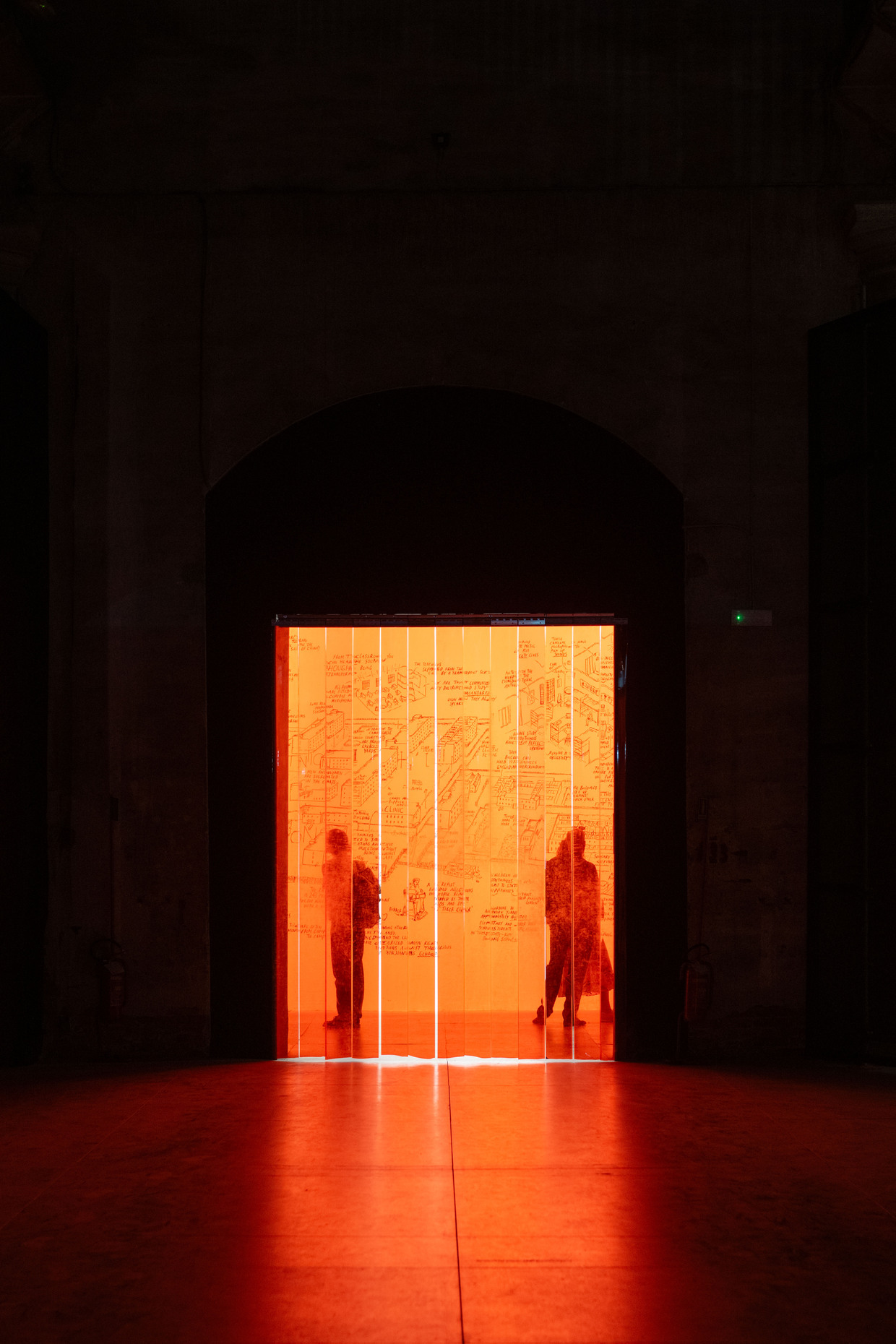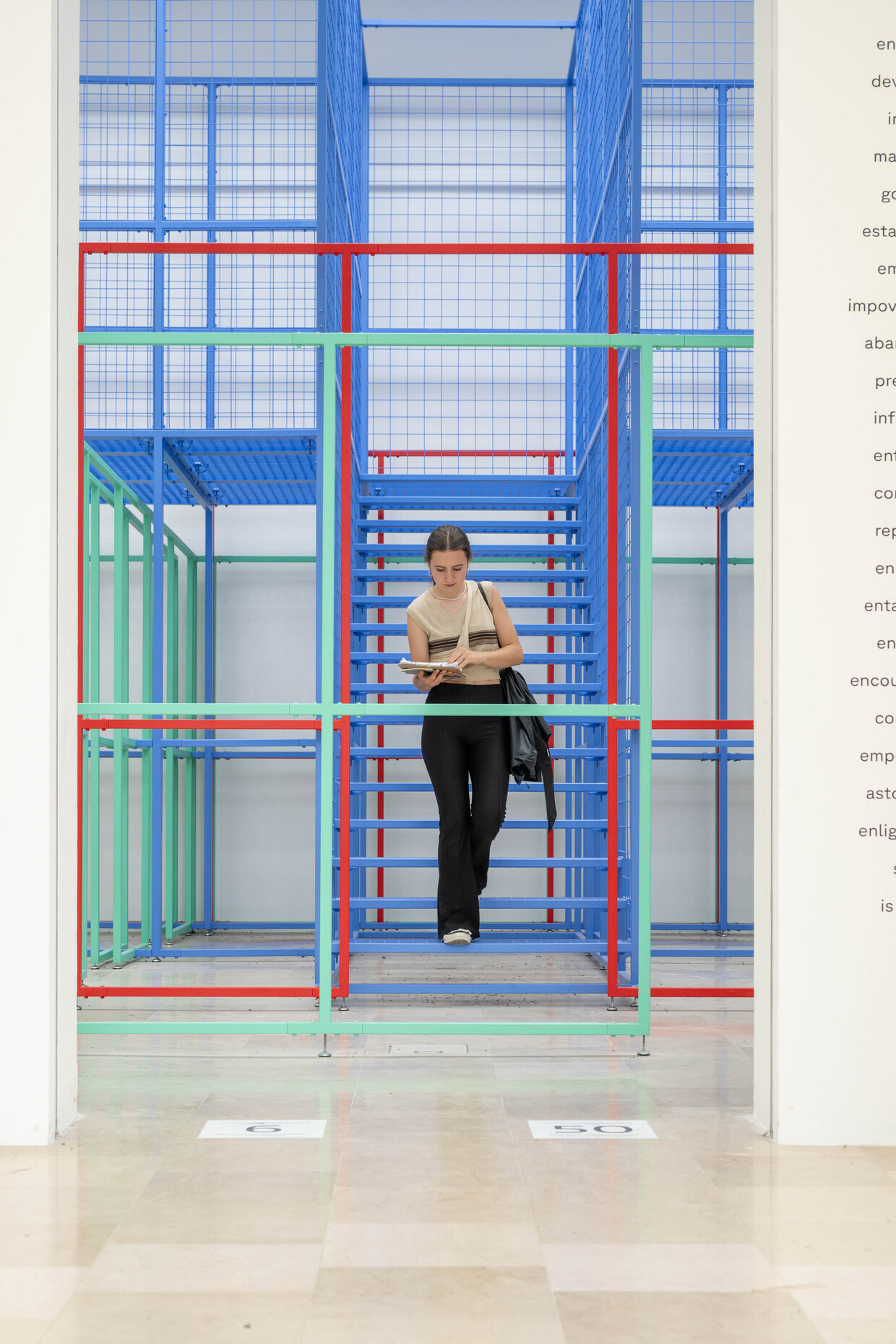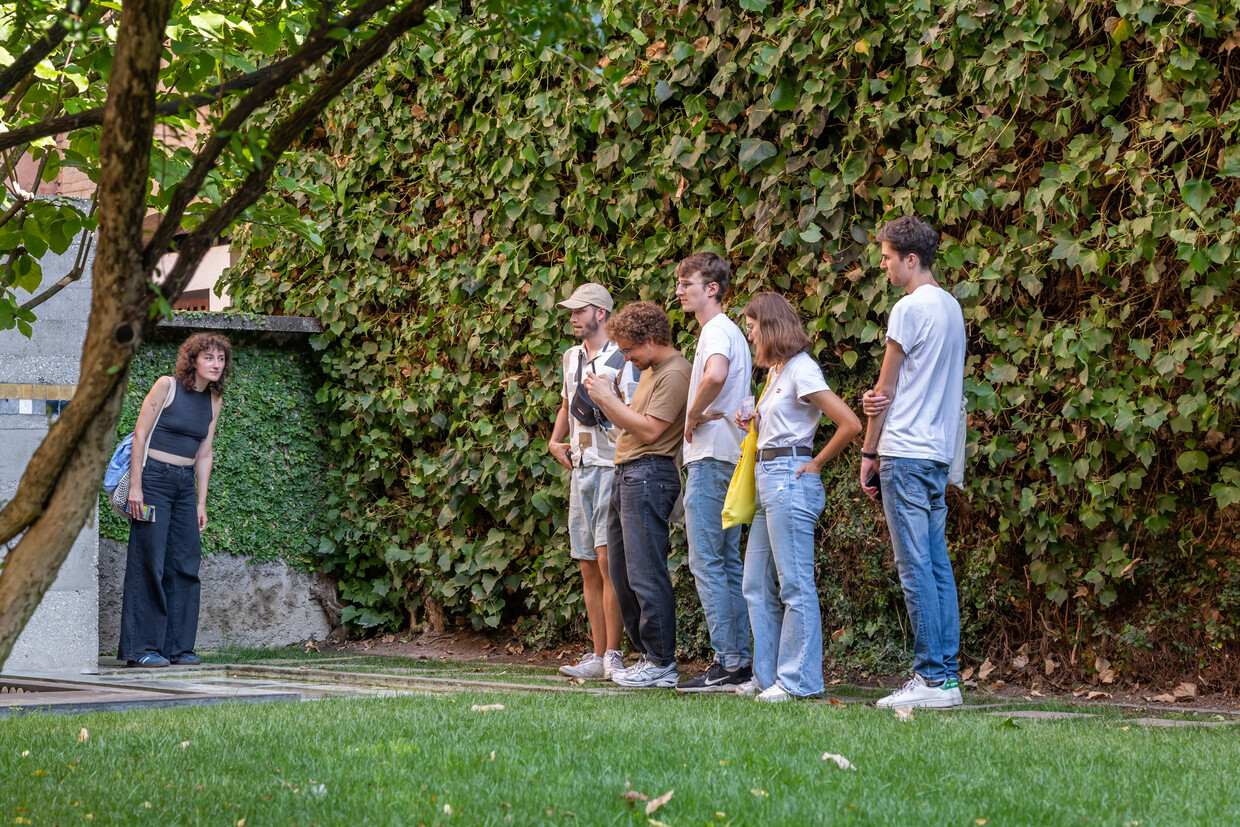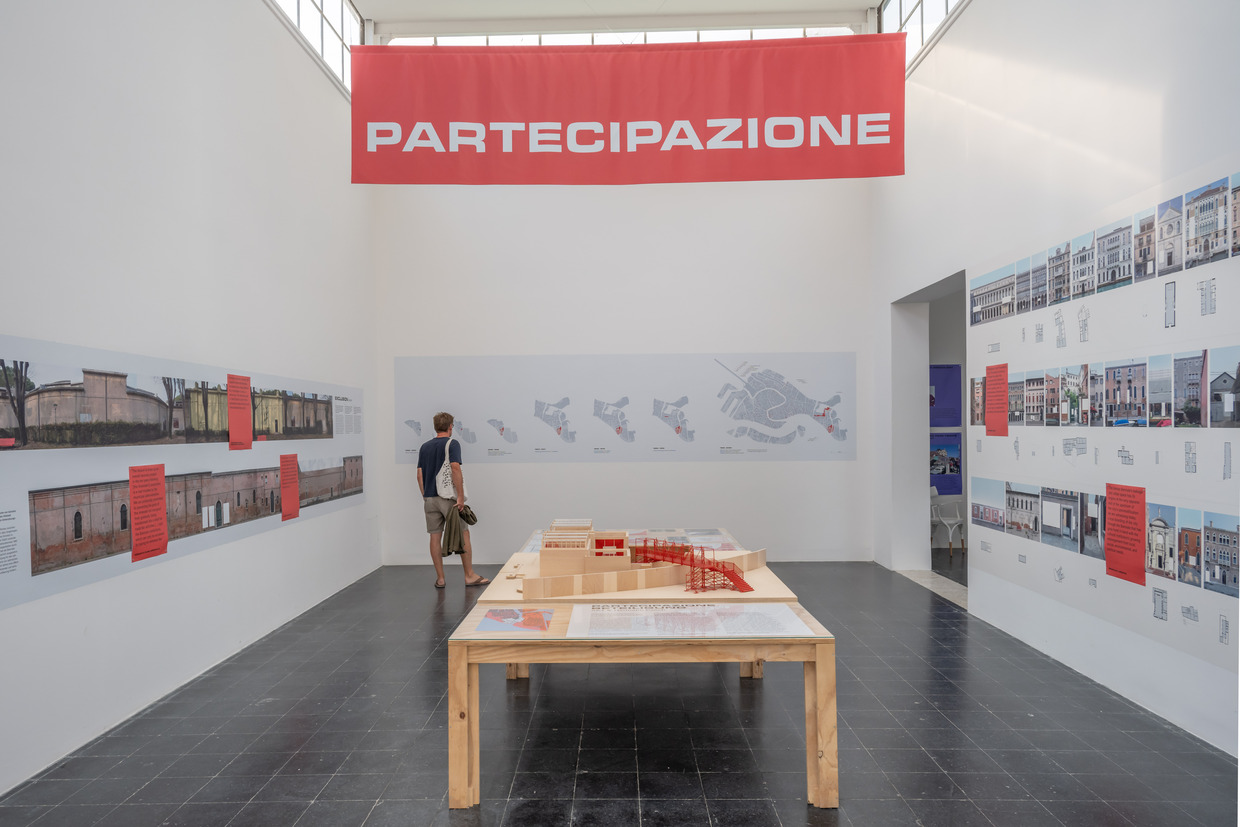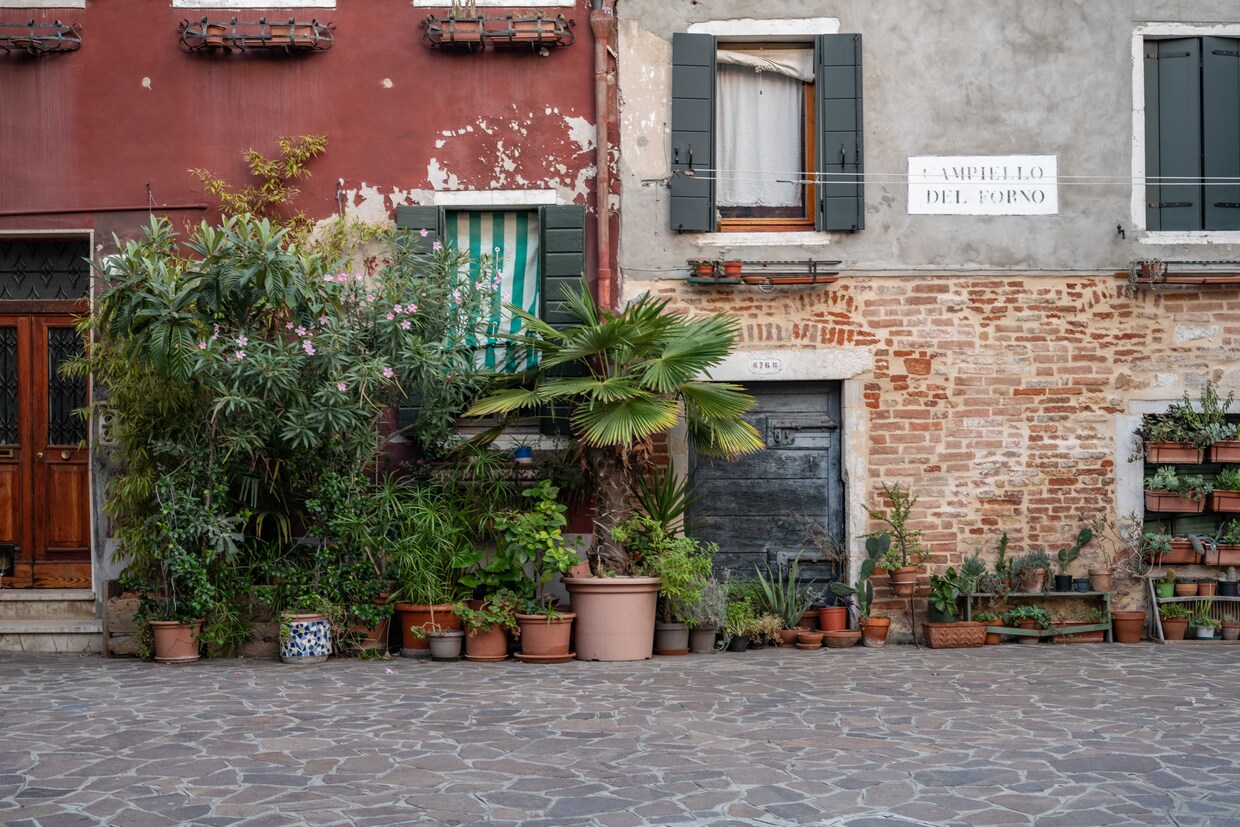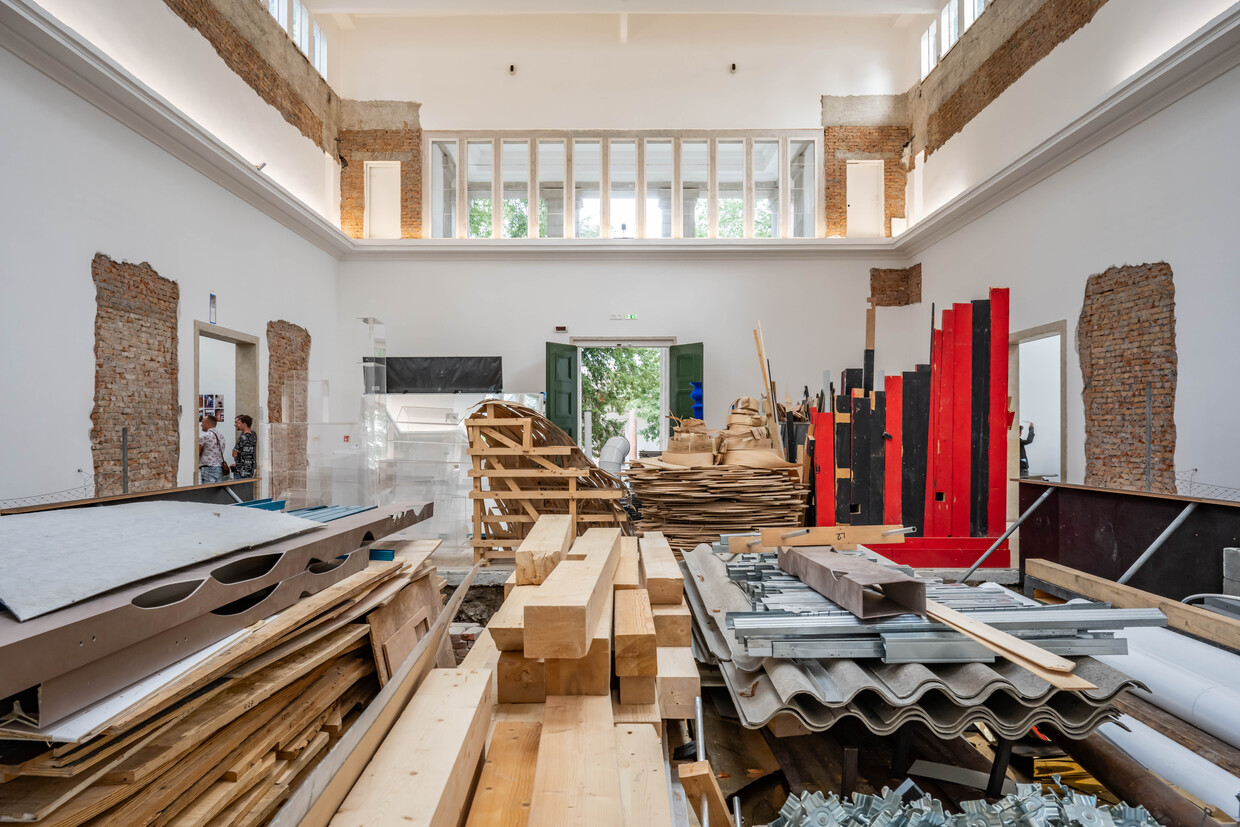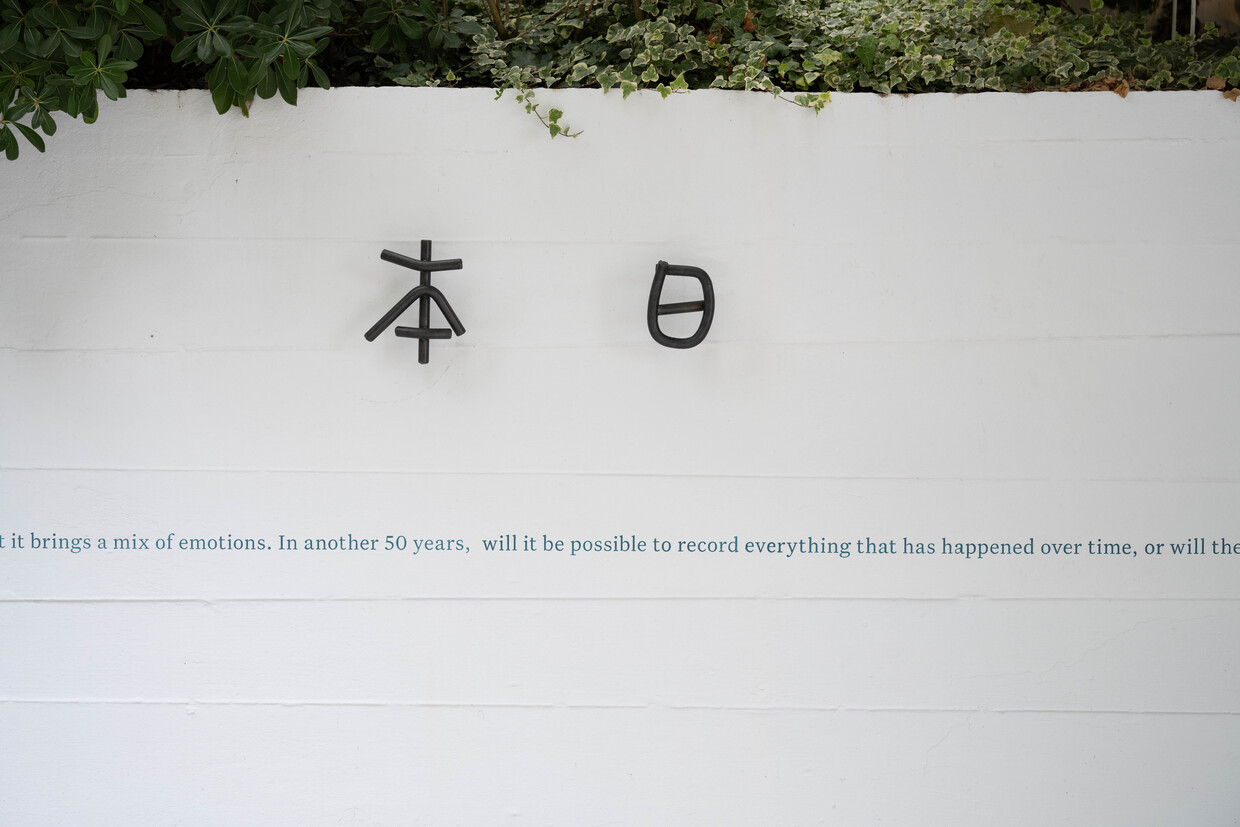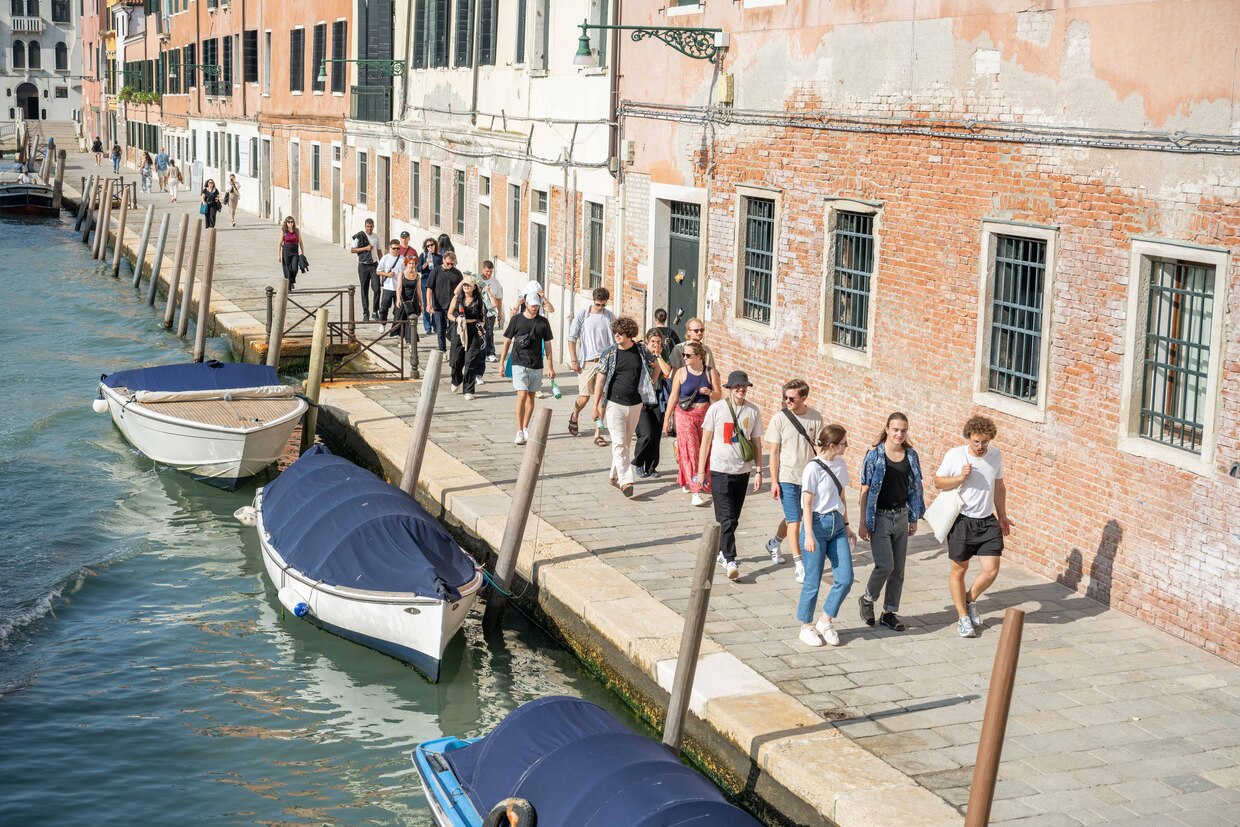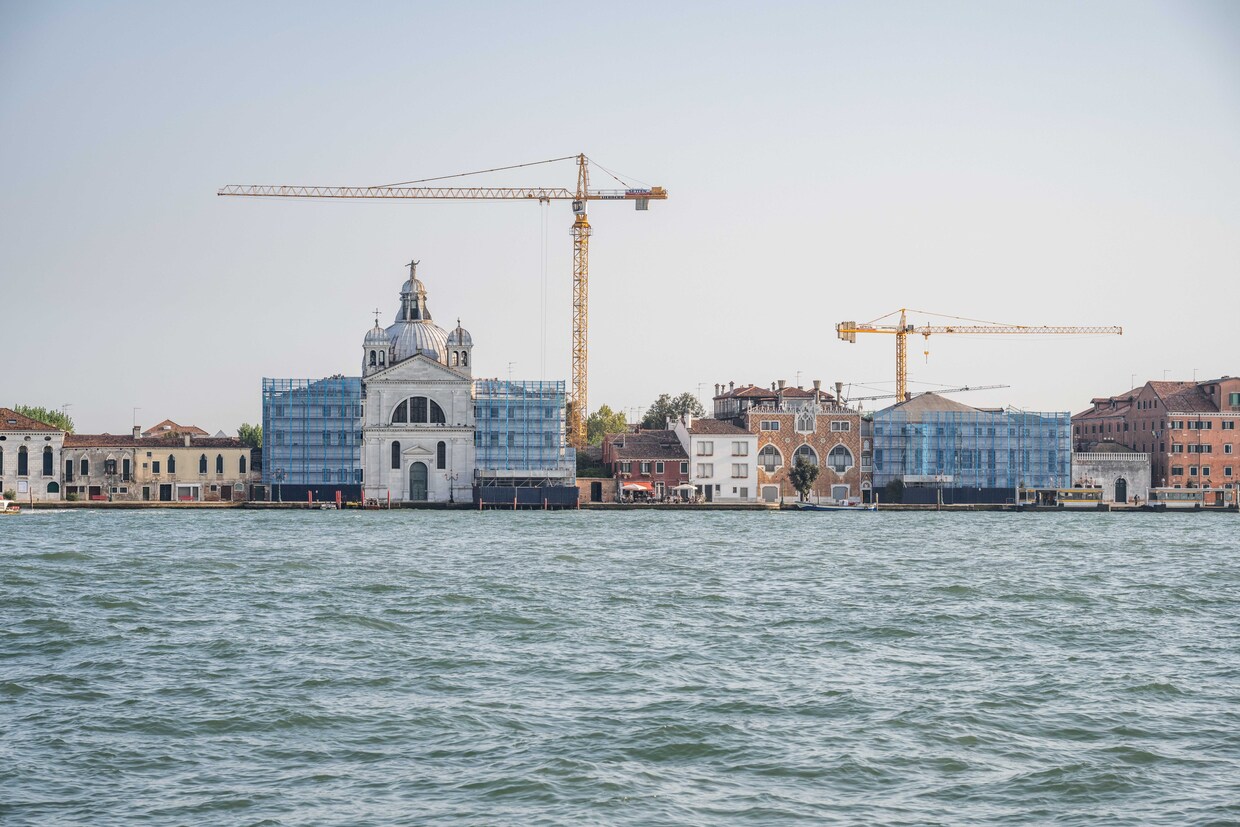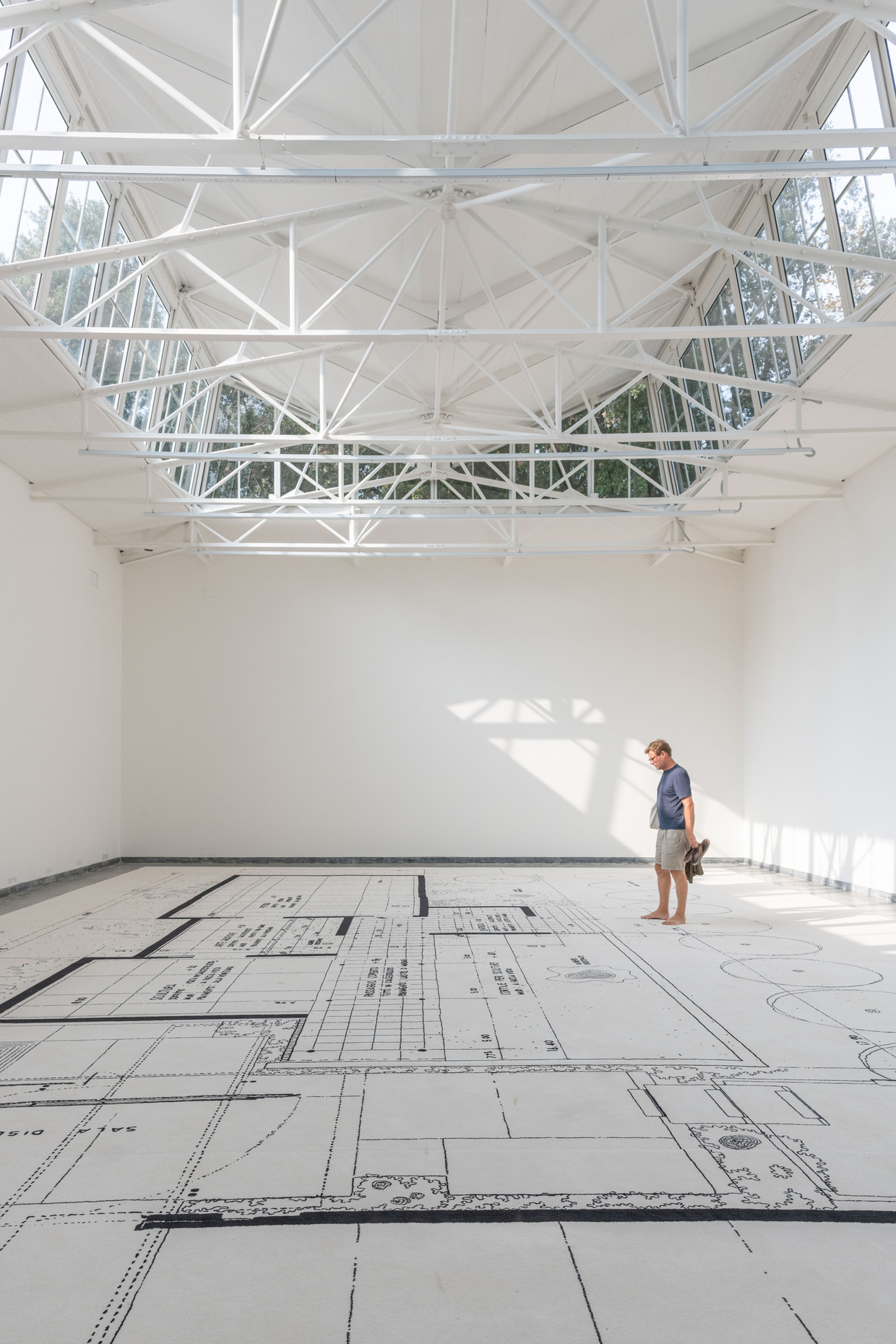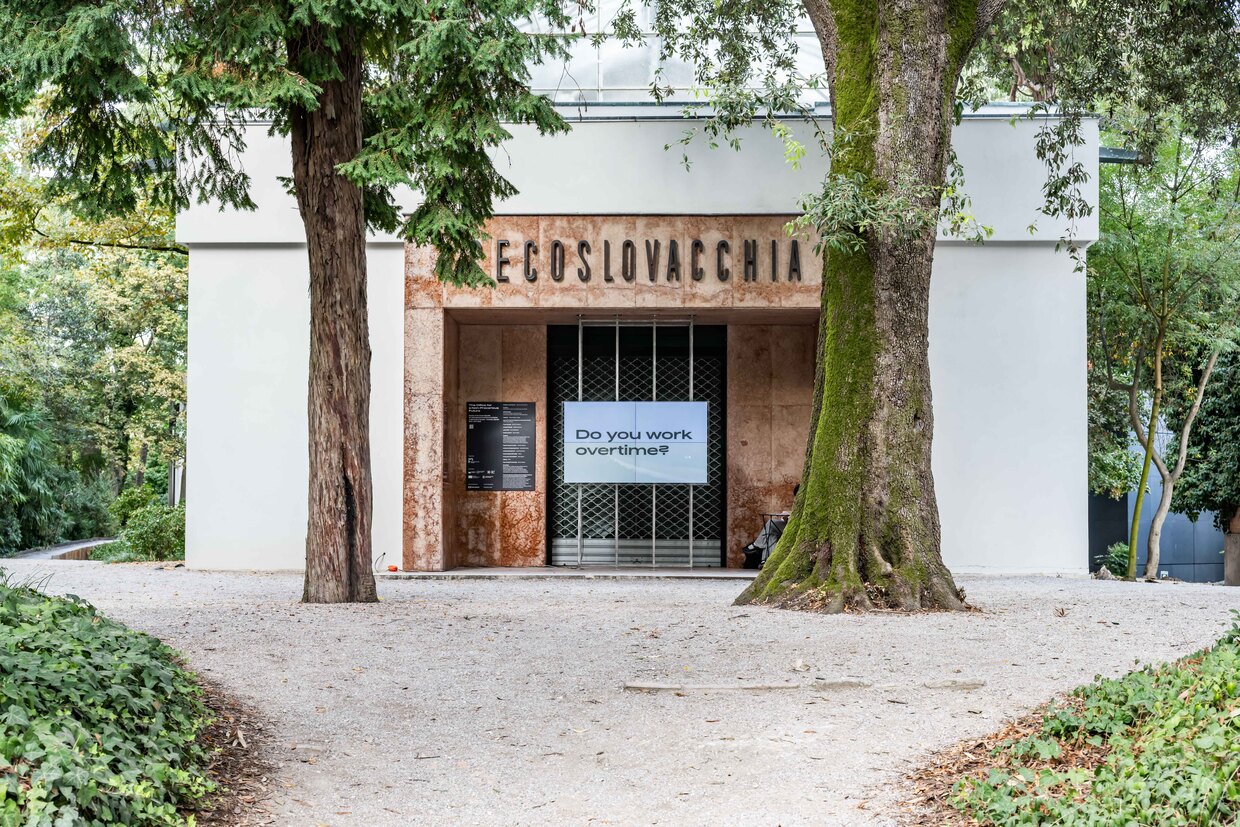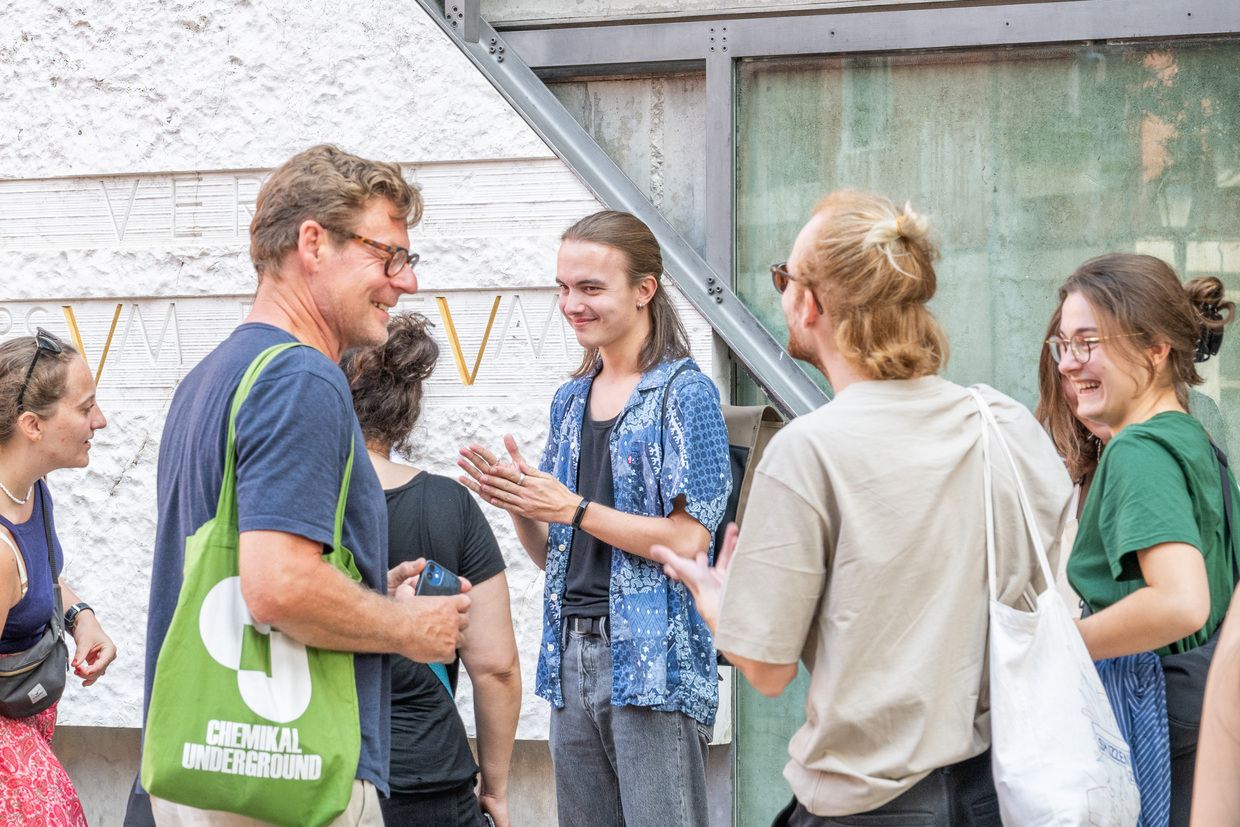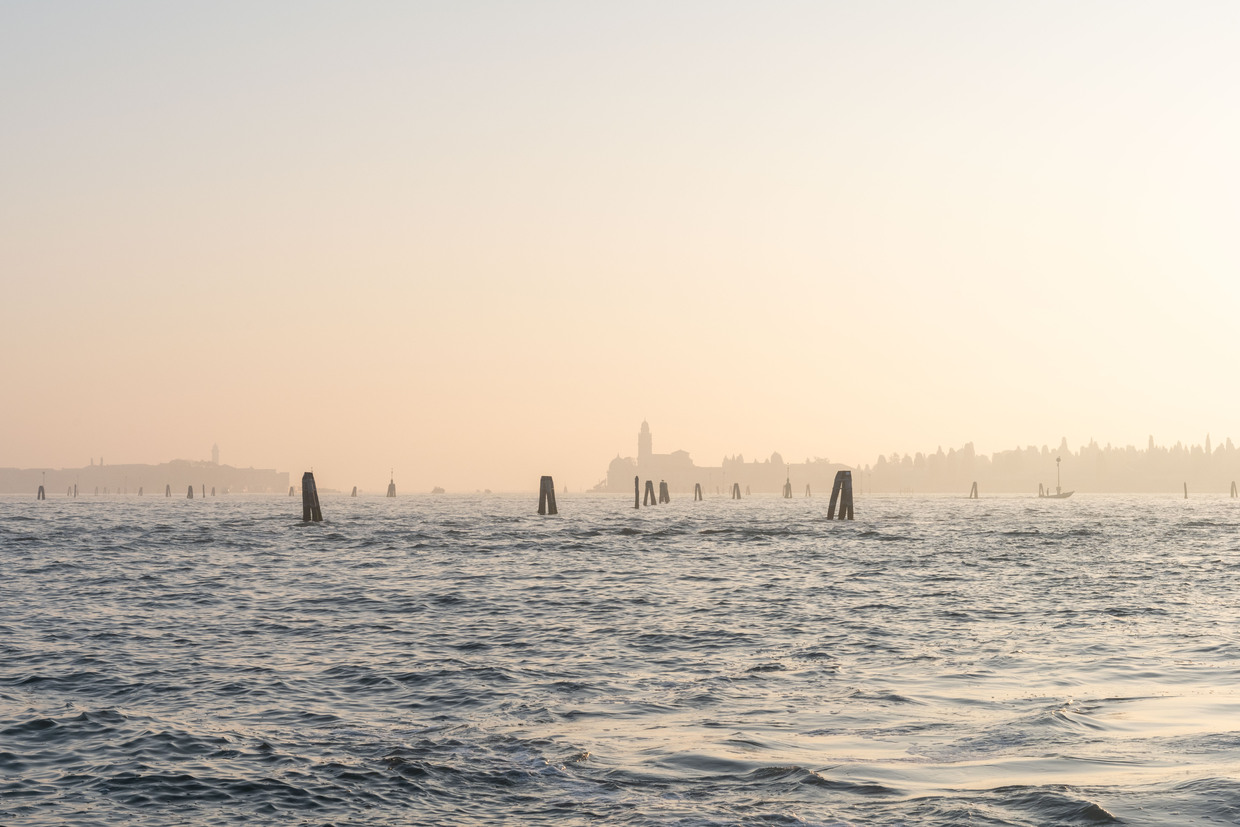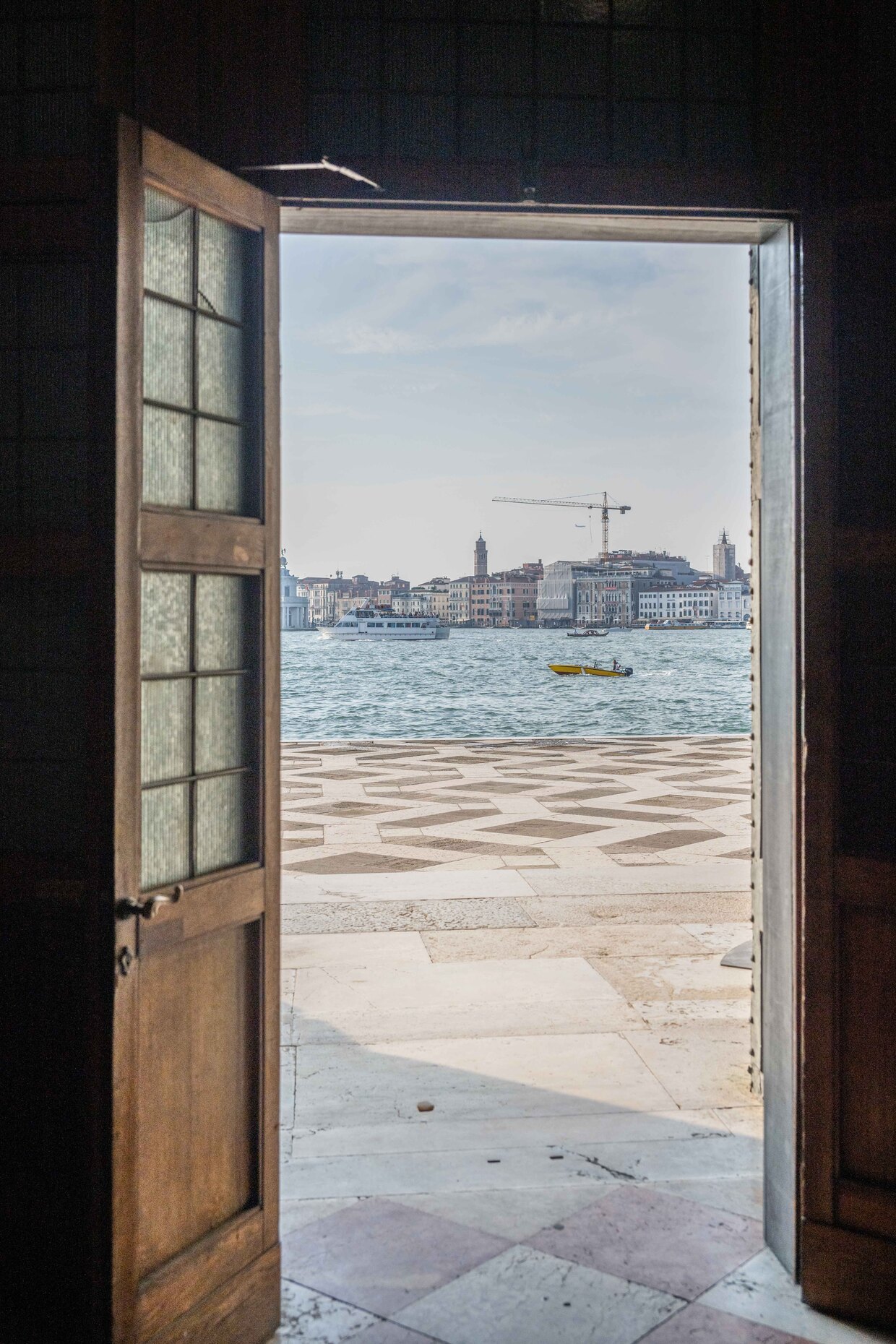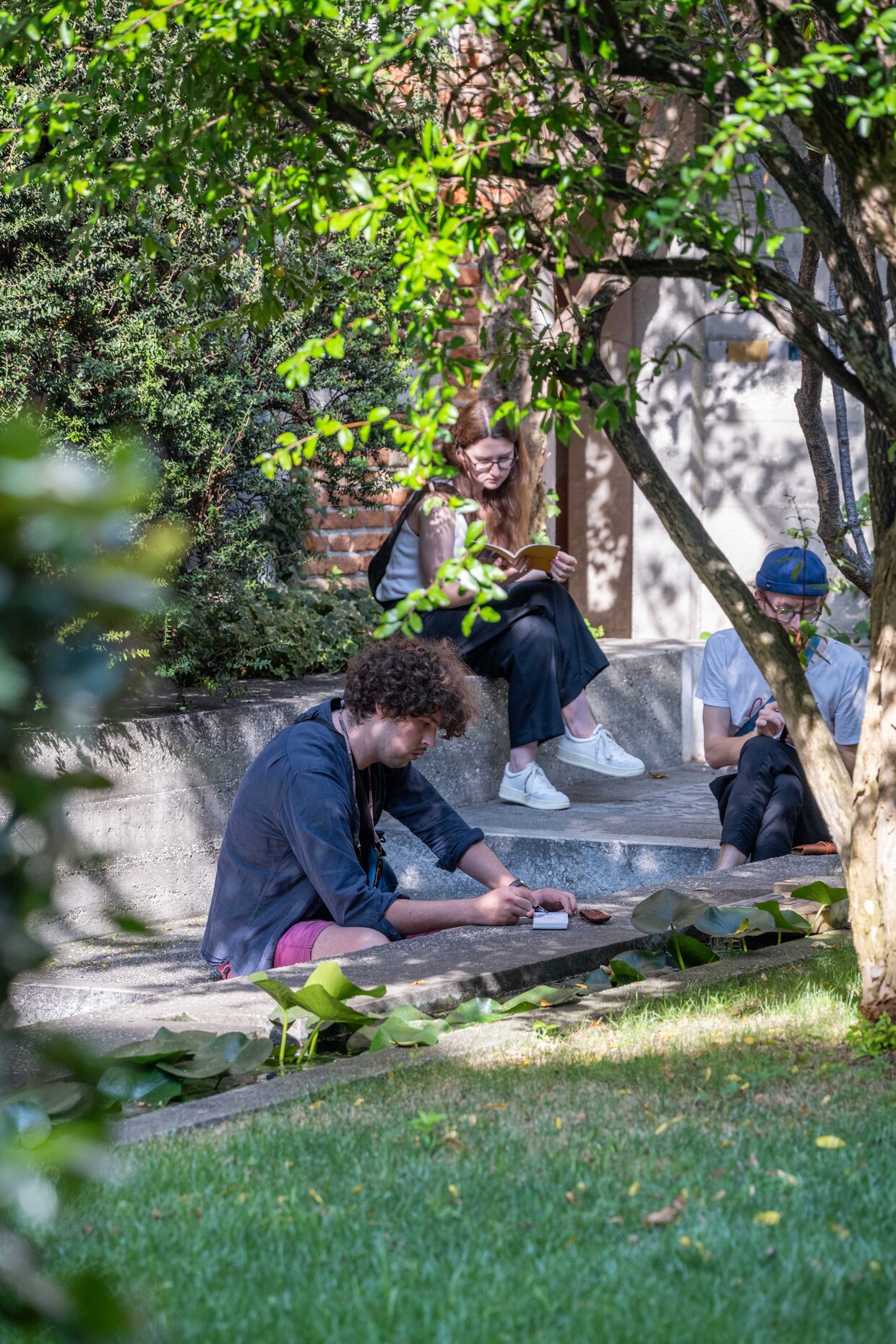Exkursion nach Venedig und zur Biennale im Rahmen des Masterseminars, 02.10.-06.10.2023
Die Reise zur Biennale nach Venedig ist einer der Höhepunkte der Tätigkeit von a*komm. Zum vierten Mal haben wir sie in diesem Jahr unternommen und die Erlebnisse sind jedes Mal anders, erfrischend und ein purer Genuss. Das hat natürlich zum einen damit zu tun, dass die Biennale in jeder ihrer Ausgaben völlig unterschiedliche Angebote macht und Herausforderungen stellt. Es ist aber ebenso spannend, die Stadt Venedig immer wieder in Begleitung von neuen Mitreisenden zu erleben. Zudem ist Venedig auch keineswegs so statisch und museal, wie man vielleicht vermuten mag. Ganz im Gegenteil taugt auch die Stadt selbst zum Zukunftslabor, in dem über Nachhaltigkeit, Zukunftsfähigkeit und Soziale Gerechtigkeit nachgedacht werden muss, da sie sonst nicht mehr lange existieren wird.
Deswegen behandeln wir im vorbereitenden Seminar nicht nur die Geschichte und Architektur von Venedig, setzen uns mit Palladio und Carlo Scarpa auseinander und erfreuen uns an ihrer zeitlosen Schönheit, sondern untersuchen schon immer auch die immensen Gefährdungen, denen die Stadt ausgesetzt ist, und machen uns auf die Suche nach jenen Bereichen der Stadt, in denen noch immer gewohnt, gelebt und gearbeitet wird. Seit unserem ersten Besuch in Venedig vor neun Jahren wurden die großen Kreuzfahrtschiffe aus der Stadt verbannt und wurde das Megaprojekt MOSE in Betrieb genommen. Der Tourismus mit seinen Belastungen ist geblieben und nach der COVID-Pause sogar noch einmal intensiviert. Das Phänomen des Overtourism ist seit einigen Jahren sowohl in der Wissenschaft als auch in den Medien dauerpräsent und Venedig ist eines der meistdiskutierten Beispiele. Jedes Jahr werden neue Vorschläge zu seiner Kontrolle gemacht und teilweise auch implementiert. Wenn man drei Tage die Stadt zu Fuß und mit dem Vaporetto erschließt, dann kommt man nicht umhin, neben den Krisensymptomen auch eine unglaubliche Resilienz festzustellen, die mit Kultur, Schönheit, architektonischer und städtebaulicher Qualität zu tun hat.
Die Eingriffe von Carlo Scarpa in den historischen Bestand, sei es im Olivetti Store an der Piazza San Marco, sei es in der Fondazione Querini Stampalia oder an der IUAV machen auf wunderbare Weise deutlich, wie auch maßstäblich kleine Interventionen über Jahrzehnte eine Wertschätzung erzeugen können, die zu einem sorgfältigen Umgang führt. Zudem gibt es kaum Orte, die die positive Macht der Architektur, Glücksgefühle zu erzeugen, derartig intensiv vor Augen führen. Oder auch, wie am Mahnmal für die Partisanen des 2. Weltkriegs vor den Giardini, eine emotionale Erschütterung zu erzeugen, die sich auf das aktuelle Leid heutiger Migrant*innen übertragen lässt.
Auch auf dem Biennale-Gelände gibt es Orte der Schönheit und viele Exponate, die emotional berühren. Allerdings ist die Überwältigung durch die Vielfalt der Angebote meist so groß, dass es – gerade denjenigen, die zum ersten Mal hier sind – schwerfällt, Inhalte noch bewusst aufzunehmen und sich emotional berühren zu lassen. Die diesjährige Ausgabe der Biennale mit dem Schwerpunkt auf Afrika und der afrikanischen Diaspora macht da keine Ausnahme. Möglicherweise ist sie sogar noch etwas weniger zugänglich, da sie explizit auf Didaktik, auf die Präsentation von Lösungen und auf das Weisen von Richtungen verzichtet, zum anderen Mittel einsetzt, und stattdessen zum Dialog einladen möchte, für den aber zumindest bei einer Besuchsdauer von zwei Tagen die Zeit fehlt. Der allgegenwärtige Einsatz von Film und Video führt zu vielen dunklen Räumen, der Mangel an kurzen erläuternden Texten zu großen Verständnisschwierigkeiten. Tatsächlich in eine tiefe Diskussion der spannenden und vielfältigen Themen zu kommen, ist zumindest uns deshalb nur selten gelungen.
Aber was will man auch anderes erwarten? In der Regel wirkt die Biennale erst im Nachhinein, und kaum jemand wird nicht Wochen oder Monate später auf Einsichten und Erlebnisse zurückgreifen, die durch bestimmte Exponate vermittelt wurden. Und kaum jemand wird die Stadt Venedig verlassen, ohne das Gefühl, dass diese einzigartige städtische Struktur uns auch heute noch unglaublich viel über den Zusammenhang von Raum, Bewegung und Wahrnehmung vermitteln kann, oder darüber wie Gebäude, die 700 Jahre alt sind, bis heute nicht nur ihre Funktion erfüllen, sondern auch zum Betrachten, Genießen und Nachdenken einladen. Wir freuen uns schon jetzt darauf, in zwei Jahren zurückzukehren.
Excursion to Venice and the Biennale as part of the seminar of the same name, 02.10.-06.10.2023
Organisation and on-site guidance: Riklef Rambow & Lama Alkadi; on-site co-leadership and photographic documentation: Marie Luisa Jünger (she took all the photos on this page); participants: 25 students of the Master's program in Architecture or Art History plus several guests.
The trip to the Venice Biennale is one of the recurring highlights of a*komm's activities. This is the fourth time we have done it this year and the experiences are different, refreshing and a pure pleasure every time. On the one hand, of course, this has to do with the fact that the Biennale offers completely different content and challenges in each of its editions. But it is just as exciting to experience the city of Venice again and again in the company of new fellow travellers. Moreover, Venice is by no means as static and museum-like as one might think. On the contrary, the city itself is a laboratory for the future, where we can not avoid to think about sustainability, future viability and social justice, otherwise it will not exist for long.
That is why in the preparatory seminar we not only deal with the history and architecture of Venice, deal with Palladio and Carlo Scarpa and delight in its timeless beauty, but have always also examined the immense threats to which the city is exposed and set out to find those areas of the city where people still live, live and work. Since our first visit to Venice nine years ago, the large cruise ships have been banned from the city and the mega-project MOSE has been put into operation. Tourism with its burdens has remained and even intensified after the COVID break. The phenomenon of overtourism has been permanently present in both academia and the media for several years and Venice is one of the most discussed examples. Every year, new proposals to control it are made and sometimes implemented. If you spend three days exploring the city on foot and by vaporetto, you cannot help but notice, in addition to the symptoms of crisis, an incredible resilience that has to do with culture, beauty, architectural and urban planning quality.
Carlo Scarpa's interventions in the historical inventory, be it in the Olivetti Store in Piazza San Marco, be it in the Fondazione Querini Stampalia or at the IUAV, make it wonderfully clear how even small-scale interventions can generate an appreciation over decades that leads to careful handling. Moreover, there are hardly any places that so intensively demonstrate the positive power of architecture to generate feelings of happiness. Or, as at the memorial to the partisans of the Second World War in front of the Giardini, to create an emotional shock that can be transferred to the current suffering of today's migrants.
On the Biennale grounds, too, there are places of beauty and many exhibits that are emotionally touching. However, the overwhelming diversity of the offerings is usually so great that it is difficult - especially for those who are here for the first time - to consciously absorb the content and allow themselves to be touched emotionally. This year's edition of the Biennale with its focus on Africa and the African diaspora is no exception. It may even be a little less accessible because it explicitly refrains from didactics, from presenting solutions and from pointing directions, on the other hand it uses means and instead wants to invite dialogue, for which, however, there is no time, at least during a two-day visit. The ubiquitous use of film and video leads to many dark spaces, the lack of short explanatory texts to great difficulties of understanding. To actually get into a deep discussion of the exciting and diverse topics was therefore only rarely successful, at least for us.
But what else would one expect? As a rule, the Biennale only has an effect in retrospect, and hardly anyone will not fall back on insights and experiences conveyed by certain exhibits weeks or months later. And hardly anyone will leave the city of Venice without the feeling that this unique urban structure can still teach us an incredible amount today about the connection between space, movement and perception, or about how buildings that are 700 years old still not only fulfil their function today, but also invite us to look at them, enjoy them and think about them. We are already looking forward to returning in two years.
Photos: Marie Luisa Jünger, mju-Fotografie



